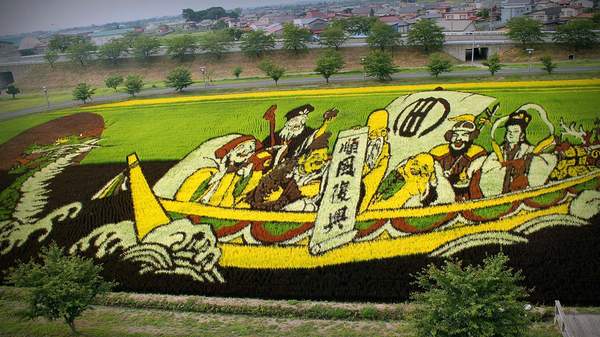In partnership with
Overview
This article is part of our series on the 17 most unique things to have come out of Japan. Check out the other 16.
More than 200,000 tourists head to Japan’s Aomori prefecture every year to visit its awe-inspiring rice paddy art. Farmers have been cultivating rice in the area for hundreds and hundreds of years, and in the 1990s, a group of archaeologists found out that some of the strains had been growing continuously for more than 2,000 years.
To ensure their protection, the tourism board decided that the farmers needed to attract the attention of visitors. So they came up with the idea of turning the paddies into giant artworks. The farmers create their masterpieces by growing rice strains in a variety of natural colours – from Tsugaru Roman, which is green, to Yukiasobi rice, which is white, to Beniasobi rice, which is red. Once they master basic patterns, they become more sophisticated, adding intricate detail to their works.
A vast array of images has been depicted, from impressions of famous people like Napoleon and Marilyn Monroe to Japanese gods and demons. They've also recreated renowned paintings, such as the Mona Lisa and Hokusai Katsushika’s ukiyo-e.
Visitors are able to see the works from afar as well as join rice farming tours, during which they experience every aspect of traditional rice cultivation, including planting and harvesting.
